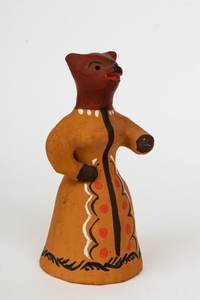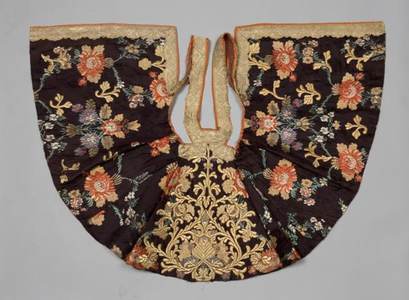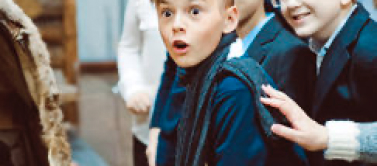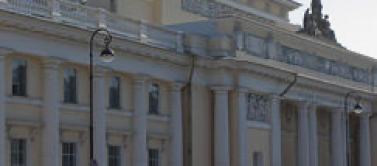Collections on the Russian People’s Culture

The Museum’s collection gives you an idea of the traditional object world of the Russians, mainly those of the country’s European part, to a lesser extent of the Urals, Caucasus, and Siberia. The exhibits represent all facets of traditional economic and everyday lifestyle of the Russian people and the spiritual aspect of its life.
Currently, the Russian Depository of Artifacts numbers 96,037 exhibits. It is composed of articles of traditional culture dated mostly late 18th – 20th century. Currently, the Russian Depository of Artifacts numbers 96,037 exhibits. It is composed of articles of traditional culture dated mostly late 18th – 20th century. The Museum’s collection gives you an idea of the traditional object world of the Russians, mainly those of the country’s European part, to a lesser extent of the Urals, Caucasus, and Siberia. The exhibits represent all facets of traditional economic and everyday lifestyle of the Russian people and the spiritual aspect of its life.
1902–1914
Systemic acquisition for the Russian depository of artifacts began in 1902 and was based on the “Program for collecting ethnographic objects” developed in 1901–1902 by museum curators headed by D. A. Klemenz. The period from 1902 till 1914 was the time of building up the core of the Russian collection. In that time, the Museum received 38,151 exhibits. The acquisitions were made by museum curators E. A. Lyatsky and N. M. Mogilyansky, non-staff collaborators A. A. Makarenko, L. V. Kostikov, D. T. Yanovich, I. Ya. Bilibin and others during expeditions; exhibits were also received from local correspondents. They were collected all over the area of settlement of the Russians in European Russia, however preference was given to working in Russian North, which was considered the conservation area of Russian ancientry. “Distinctive,” i.e. ethnically expressive, things were preferred – clothes, interior decor, utensils, work tools of plowmen and artisans, and means of transport of the 18th and 19th centuries.
Among the private collections acquired by the Museum, the largest were the collections of N. L. Shabelskaya, K. D. Dalmatov, and F. M. Plyushkin.
1914–1919
The World War I, February and October revolutions, Civil War, and the economic and political instability in the country caused by them actually suspended the collecting activity for nearly seven years.
1920s
Systemic acquisition for the Russian depository only resumed in the early 1920s. As previously, the expedition approach to acquisition was considered to be the basic one. However, unlike the first decade of the 20th century, the expeditions were aimed not only at collecting artifacts but also at detailed study of ethnographic features of culture. In those years, the Museum jointly with the State Academy of Material Culture History organized several large integrated ethnologic expeditions: “Upper Volga (1921–1925), Southeastern (1925–1927) and Northwestern (1925–1929)”; as a result, over 2,000 artifacts were acquired. Their manager and leader was Head of the Museum’s Russian-Finnish Department D. A. Zolotarev, and its participants were Ye. E. Blomqvist, N. P. Grinkova, Z. P. Malinovskaya etc. However, the main replenishment of the Russian depository in that decade was by acquisition of private collections nationalized by the state in 1918–1923 or handed over / sold by their owners. Of the highest scientific, historic, and artistic value were the collections of brothers A. A. and A. N. Beloslyudov; of artists S. S. Solomko, A. I. Denshina, N. I. Kulbina, and Ye. M. Behm; of collectors N. F. Romanchenko, I. V. Tsurikova-Goryainova etc. As a result, about 5,000 artifacts of the mid-19th century were acquired from private collections.
1930–1950s
In the 1930s–1950s, the collecting policy underwent noticeable changes. The acquisition of artifacts of traditional culture was suspended, and the collections started to receive objects related to urban culture, and products of folk arts and crafts. Such selection was explained by the new goal, i.e. to show through expositions the achievements of the socialist state and a golden age of ethnic cultures. It was intended that modern artifacts would demonstrate economic achievements of the Russian people, while urban clothes and utensils acquired in kolkhozes would demonstrate the transition of Russian peasantry from traditional lifestyle to modern urban model; arts and crafts were to tell about the modern Russian culture, “socialist in its content and national in its form.”
In line with new tasks, the artifact acquisition methods changed too; things were bought directly at factories and mills, arts and crafts enterprises, and in shops. The expeditions were gradually turning into short duty trips for studying the achievements of particular successful kolkhozes and collecting material illustrating these achievements. Thus, sent for such trips were Russian Department Manager N. P. Grinkova; Z. P. Malinovskaya, M. Yu. Palvadre, N. A. Fedorova, T. S. Vyazovskaya, and L. V. Tazikhina. The most efficient were travels of N. A. Fedorova, L. V. Tazikhina, T. S. Vyazovskaya, and M. Stepanova to old handicraft centers of Archangel, Vologda, Kirov, Ryazan, and Tambov Oblasts in the late 1930s. The acquisition for the Russian depository of products of contemporary arts and crafts continued up to the late 1980s. The need for them was explained first by the wish to show a culture national in its form, and in the 1970s–1980s, by the need to document in the Museum’s collection the current state of the Russian people’s ethnic culture.
In 1949, the Museum’s Russian depository received the collection of the Museum of the Peoples of the USSR (Moscow) disbanded in 1948. Its major part was exhibits of the 1867 Ethnographic Exhibition and 1923 All-Union Agricultural and Handicraft Exhibition held in Moscow.
1960–1980s
The acquisition of traditional culture artifacts for the Russian depository was resumed in the second half of the 1950s when the construction of the “Russians. Late 19th – Early 20th Century” began. However, systematic acquisition activity did not start until the late 1960s. In those years, artifacts were collected both during expeditions and by purchasing from private persons, which became widespread at that time. The task of “filling the collection gaps” was declared as priority. The expedition research, mostly in the European part of the USSR, was done by I. I. Baranova, head of the Department of Ethnography of the Russian People; G. G. Babanskaya, G. N. Babayants, L. S. Smusin, L. N. Molotova, I. I. Shangina, N. N. Sosnina, and in the late 1980s also by O. G. Baranova and D. A. Baranov. Besides, in order to feature current ethnic processes in collections, items, mainly clothes, manufactured in the Russian style at fashion houses of Leningrad and Moscow, and artisan handwork were acquired.
As a result, the Museum’s assets got relatively numerous collections of artifacts, mostly of the first half of the 20th century.
1990–2000s
In the last decade of the 20th century the intensity of acquisition through expeditions somewhat declined. There were expeditions to Kirov, Yaroslavl, Pskov, and Vologda Oblasts. Their participants were Department Manager I. I. Shangina, O. G. Baranova, N. A. Zimina, S. V. Fedorova, and D. A. Baranov. The main goal of these expeditions was to gather information on the current state of traditional culture. Few exhibits were collected due to lack of funds. The largest acquisition from private owners was a collection of traditional women’s garments from Belgorod Oblast comprising over one hundred items dated last decade of the 19th and first quarter of the 20th century, and a collection of 105 northern distaffs.
2000–2010s
In the 21st century, replenishment of the Russian collections has continued along three lines:
1) expedition acquisitions on the themes “Local population groups in the Russian North” in Archangel, Vologda, Perm, and Kirov Oblasts and in Karelia (collectors D. A. Baranov, O. G. Baranova, O. N. Glazkova (Fonyakova), T. A. Zimina, and V. N. Kuznetsova); “Russian population of the Middle and South Urals” in Perm Krai and in Chelyabinsk and Orenburg Oblasts (collectors O. G. Baranova, T. A. Zimina, Ye. L. Madlevskaya, and I. I. Shangina); “Russian Old Believers in Volga Land, Siberia, and Russian North” in Nizhny Novgorod and Saratov Oblasts and in the Republics of Buryatia, Komi, Altai, and Kazakhstan (collector A. B. Ostrovsky);
2) purchasing collections from professional collectors;
3) acquisitions from private persons.
The expeditions were aimed at collecting not only exhibits but also information, which later formed the basis for publication of field materials in the form of monographs, albums, and articles. Besides, expeditions were made to Penza, Belgorod, and Tver Oblasts (by Ye. L. Madlevskaya, O. N. Glazkova (Fonyakova), and I. I. Shangina), in which costume complexes were acquired.
Among the acquisitions from private persons, three valuable collections should be distinguished: V. Ya. Zhukov’s collection of copperware of the 18th-19th centuries, M. V. Surov’s collection (Northern Russian distaffs, cradles, and furniture, over 700 items) and M. Orlov’s collection (peasant furniture and means of transport, over 100 items).
As a result of expedition studies, the Museum’s collections received about 5,500 objects in that period.









